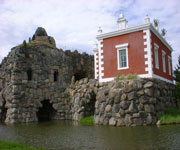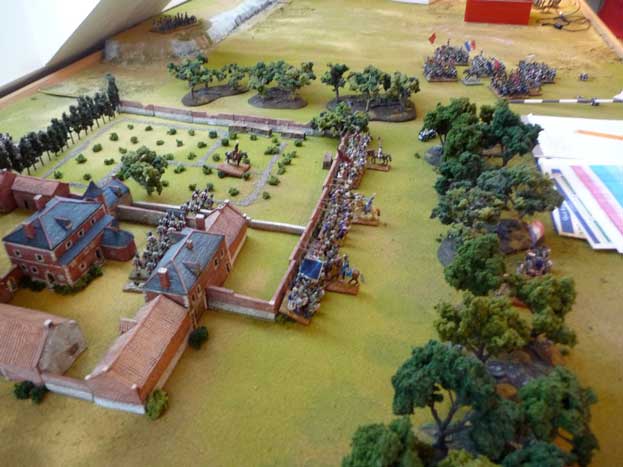The Garden Kingdom of Dessau-Wörlitz is an outstanding example of the application of the philosophical principles of the Age of the Enlightenment to the design of a landscape that integrates art, education and economy in a harmonious whole. The first essays in landscape design began with the foundation of Oranienbaum, with its unified layout of town, palace, and park from 1683 onwards. The resulting complete Baroque ensemble, with obvious Dutch connections deriving from its designer, Cornelis Ryckwaert, has survived to the present day.

Continent: Europe
Country: Germany
Category: Cultural
Criterion: (II)(IV)
Date of Inscription: 2000
English Landscape Gardens
The developments on these lines took place around 1700 with the reclamation of marshy areas along the Elbe and the creation of planned villages and farmsteads. During the reign of Prince Leopold III Friedrich Franz of Anhalt-Dessau (1740-1817), an extensive landscape design project was begun around 1765 over the entire principality. This ambitious programme was launched in close collaboration with the architect and art theorist Friedrich Wilhelm von Erdmannsdorff (1736-1800). Landscape design, public education, and encouragement of the arts were closely integrated in this scheme. Wörlitz became the point of departure for wide-ranging improvements based on English landscape gardens and neoclassical architecture.This unified scheme of buildings, gardens, and works of art, with a pervasive educational theme became the outward expression of the Enlightenment. Schloss Wörlitz was built in 1769-73 and it was the first neoclassical building in Germany. The Gothic House (1774) established a vogue for Gothic Revival buildings all across Europe. A number of other landscape projects in the principality date from this period. One of the most innovatory was the Chinese garden at Oranienbaum (1790), based on the theories of the English architect Sir William Chambers.
 |
| Garden Kingdom of Dessau Worlitz Germany |
Browse Gallery Plus UNESCO Storyline
The roads and dykes that were essential for infrastructural development were planted with avenues of fruit trees, giving them an ornamental aspect. By the time Prince Franz died in 1817 virtually the entire principality had become a unified garden. Despite industrialization and the consequent expansion of Dessau since 1900, the characteristic features of the landscape have been preserved.
The Garden Kingdom lies in the meadow landscape of the rivers Elbe and Mulde, the floodplains of which reach in places to the parklands. The core of the Garden Kingdom is the historic gardens, with their buildings and sculpture. In addition to the historic garden enclosures, neoclassical and neo-Gothic structures such as dyke watchtowers, hostelries, statues and bridges are to be found widely distributed, acting as key features of the landscape. The agricultural areas, such as fields, meadows, and orchards, have been improved by ornamental tree plantings, so as to enhance the aesthetic appearance of the landscape.
The western group consists of the Kühnauer Park, the Georgium, and the Beckerbruch. The Kühnauer Park, on the southern shore of the Kühnauersee, is a narrow elongated garden laid out in 1805 with views over the lake and its islands. Its orchards and vineyard have been partially restored. The main viewpoint is the Vineyard House, an Italianate classical building of 1818-20. Other buildings are the neoclassical Schloss Kühnau (c . 1780) and the Romano-Byzantine Church (1828-30). The Georgium or Georgengarten is a small neoclassical country house surrounded by a garden of 21.3 ha in the English style.
The garden contains a number of buildings and monuments, including the Roman Ruin and an open rotunda temple. The adjacent area of the Beckenbruch was left relatively untouched as a landscape of marsh and meadows, with a few statues and small structures inserted into it. It is designed so as to merge gradually into the Georgengarten. The central group is made up of the Luisium, the Sieglitzer Berg, the Tiergarten (part), and the villages of Mildensee and Waldersee. A wetland to the north-east of Dessau forms part of this group. The area of meadows in the bend of the Mulde was originally part of the system of dykes surrounding Dessau, laid out as garden scenery; it is now the Schillerpark.
Browse All UNESCO World Heritage Sites in
Germany. The original UNESCO inscription
Here!!!











No comments:
Post a Comment